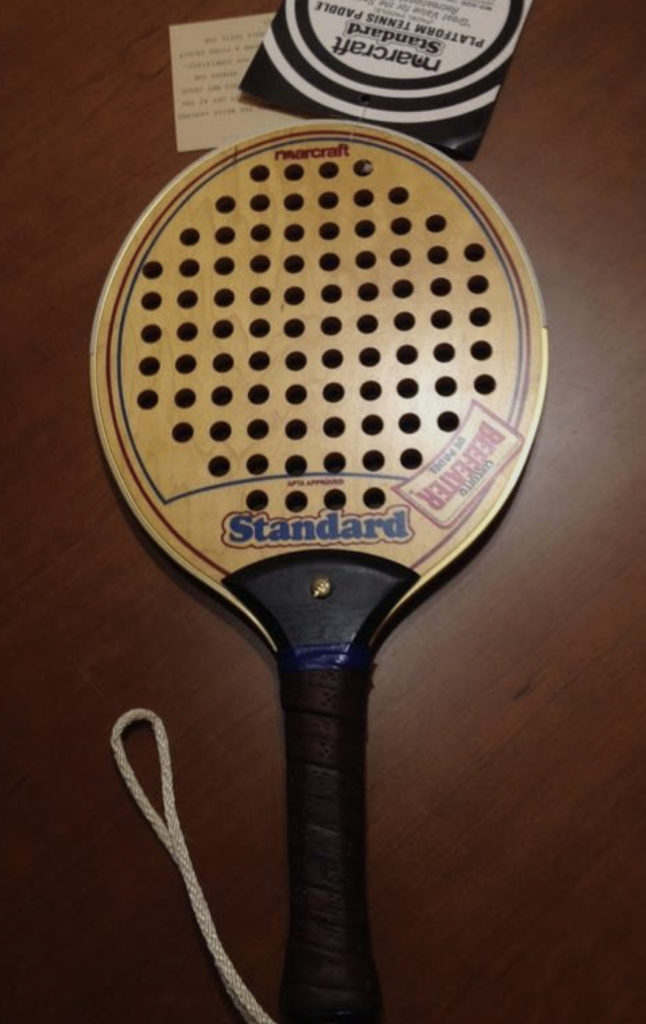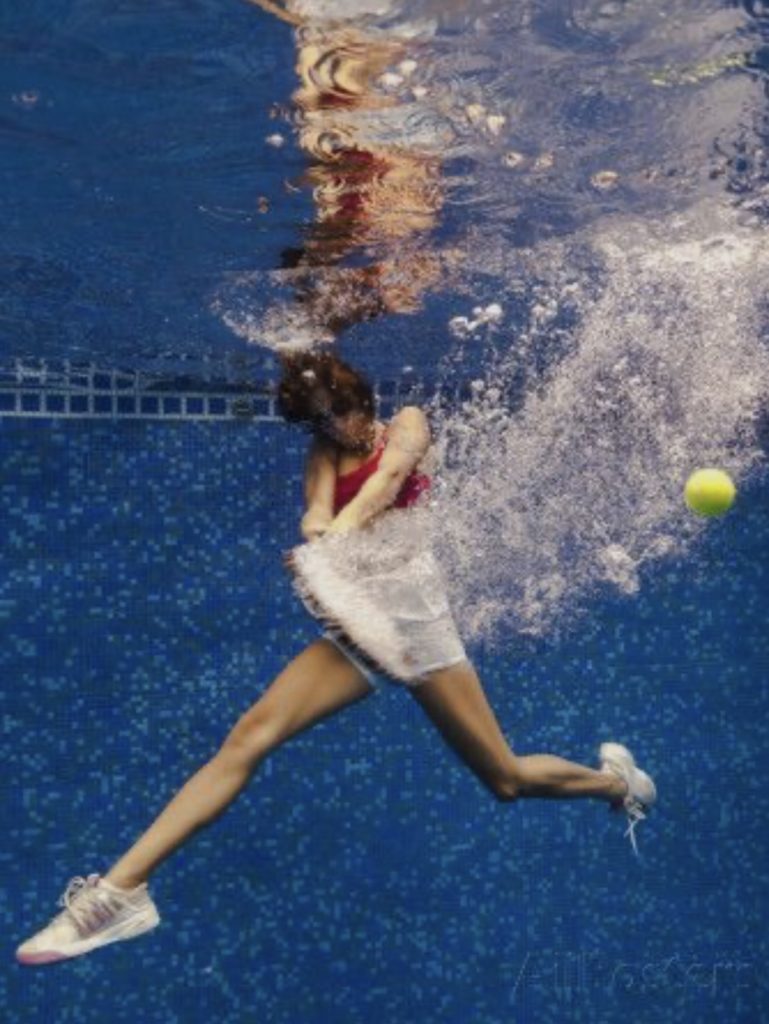“I’ll let my racket do the talking.”
John McEnroe
Planning to purchase a padel racket? With numerous options to choose from being offered by different manufacturers, finding the right one that fits your style and budget and, at the same time, helps you bring your A-game can turn out to be pretty daunting.
If you’re spending $200 – $500 on a padel racket, you’d want to make sure that it doesn’t break during your first or second game, right?
Choosing the wrong padel racket can not only impact your game but can also cause injuries. We want you to choose a padel racket that not only fits your style of play but also helps you stay under budget.
And since there are not many content pieces offering an in-depth comparison of the different types of materials used to manufacture padel rackets, most players, especially beginner-level, find themselves confused and not being able to decide whether they should go with padel rackets made of fiberglass or carbon.
That’s the reason we’ve put together this blog post – where we’ll be offering an in-depth comparison of the different types of materials used to manufacture a padel racket.

The Different Types of Materials Used to Manufacture Padel Rackets
Different types of materials are used across different areas of a padel racket like frame, core, face, and grip. And while there are numerous options available on the market, it’s important to seriously take into consideration the materials used in the frame, core, and face. If you’re someone who’s just starting out and don’t really want to invest in an expensive padel racket, you can always go with fiberglass. But note, while rackets made of fiberglass are cheap, they’re not really durable. On the other hand, advanced padel rackets are made of carbon fiber, which can not only help you ensure durability but also level up your performance.
To help you better navigate the space, we’ll be covering the different types of materials used across different areas of a padel racket, allowing you to make a better purchasing decision:
- Frame Material
- Core Material
- Face Material
Let’s explore.
Frame Material
It’s the part of the padel racket that surrounds the face – which is why high strength, as well as density materials, are used for this area. Some of the most common types of frame materials include:
- Carbon Frame
- Fiberglass Frame
- Kevlar Frame
Carbon Frame
As a result of carbon’s ability to offer an outstanding balance between hardness, lightness, and resistance, most padel rackets these days are built of carbon frames. Not only are padel rackets made of carbon frame wear-resistant, but they can also help you bring your A-game, as you’ll find these rackets to be lightweight and easy to use.
Fiberglass Frame
Fiberglass frames are used in beginner-level padel rackets, and when compared with carbon frames, they are a lot cheaper. Fiberglass is known for its elastic properties – which makes it a lot softer than carbon frames, yet the one big problem is – it’s heavier than carbon frames.
Kevlar Frames
Kevlar Frames are stronger than carbon fiber, but the only problem is – rackets made of Kevlar frames are insanely expensive. These frames are used in high-end professional padel rackets. So, unless you have a gigantic-sized budget or are a professional tennis player, we’d advise you to stick to the other two frame material options.
Core Material
Let’s talk about the core – another important part of padel rackets. Since all the control of the power of a padel racket comes from the inner part (core), it’s important to choose the right core material. A racket’s core is usually built of the two types of materials:
- EVA
- Foam
EVA
EVA (Ethylene Vinyl Acetate) is soft, flexible plastic with stress-crack resistance and low-temperature toughness. EVA can be further be divided into:
- EVA Ultra Soft Rubber – With an elastic and spongy touch, EVA Ultra Soft Rubber is the softest of all the available options. Racket cores made of EVA Ultra Soft rubber are comfortable and vibration-free – with a BIG advantage being that such rackets have a greater rebound. However, one of the BIG disadvantages is that the power of these padel rackets is limited. So, if you are looking for a powerful racket, a racket core made of EVA Ultra Soft Rubber may not be the right fit.
- EVA Soft Rubber – It’s the most popular core material used in padel rackets. Padel Rackets made of EVA Soft Rubber are not only well known for a perfect balance between power and control but are also praised for their soft touch.
- EVA Medium Rubber – Racket cores made of EVA Medium Rubber will give you a firm feel alongside good power and control.
- EVA Hard Rubber – Advanced players prefer racket cores made of EVA hard rubber – as they favor power. And since advanced players are not looking for a softer feel, it’s a great option. However, an important point to take into consideration is that even though the material is hard, it doesn’t really eliminate the absorbent feel.
Apart from EVA, another common and popular padel racket material type is foam.
Foam
If you are someone looking for a soft touch or feel and minimum amount of vibration along with a lot of bounce or spring off, racket cores made of foam may be the perfect fit for you. We’d only recommend it for players who are just starting out. However, one of the biggest minus points of choosing foam over EVA is in terms of durability.
If you’re looking for something durable, we’d advise you to avoid padel rackets made of foam. Instead, you can always go for EVA – but the EVA material you should choose depends on your level and style of play.
Lastly, let’s talk about the materials used in the racket face.
Face Material
Overall, padel rackets are made of fiberglass or carbon. And while fiberglass has historically been used to manufacture padel rackets, we’re witnessing an ever-increasing number of players switching to carbon fiber rackets.
At the same time, it’s important to note that while the popularity of carbon fiber rackets is growing, there are different sub-divisions based on quality and hardness:
- 3K
- 6K
- 9K
- 12K
This brings us to the BIG question:
“What’s the difference between these materials, and how can you make a better decision based on your play style and budget?”
Let’s explore.
Fiberglass
If you’re just starting out, fiberglass padel rackets can work well for you. Historically, racket faces made of fiberglass have a comfortable feel and are cheap. However, the minus points are that such rackets aren’t durable and are not recommended for players (advanced players) looking for control and power. At the same time, rackets made of fiberglass are heavier when compared with the ones made of carbon fiber.
While fiberglass has historically been used to manufacture padel rackets, we’re seeing things changing in the racket industry. Not only are players looking for something lightweight, but since they’re already spending their top dollars, they want to purchase a racket that’s durable and gives them more control and power.
Carbon Fiber
Carbon Fiber Rackets are a great option and will deliver outstanding results – in terms of durability, strength, and lightness. Since carbon fiber rackets are lightweight and give more control, they are preferred by advanced players.
Since the market around padel rackets hasn’t been fully developed, most brands sell plastic or fiberglass rackets as carbon fiber rackets. Hence, we seriously advise our prospects and customers to purchase rackets from brands like PADEL1969 – who use the best carbon fiber material and other materials that go into the making of the padel rackets. As we mentioned before, when it comes to carbon fiber, there are different sub-divisions based on quality and hardness:
- 3K
- 6K
- 9K
- 12K
These sub-divisions are nothing but the hardness of carbon fiber. Upon being manufactured and sized, carbon fibers are woven into fabrics. Now, manufacturers build bundles of carbon fibers – which is commonly called “tows.” These tows are rated 3K, 6K, 9K, or 12K – based on their filament, content, and fiber.
Here, the ‘K’ stands for thousand. This means – a 3K carbon fiber racket has 3,000 carbon fiber strands. Now, buyers often find themselves scratching their heads when these numbers are put in front of them.
But don’t worry. We’d love nothing more than to dive deep into these sub-divisions, helping you make a great purchase decision.
Let’s start with 3K.
3k Carbon Fiber
3K carbon fiber is the most common and highly popular carbon fiber type. In fact, it’s the workhorse of carbon fiber. Not only are padel rackets made of 3k carbon fiber lightweight and easy to use, but such rackets give more control to players. However, when compared with the other sub-divisions, 3K carbon fiber rackets offer lesser power. However, we believe that it’s better to have more control than power.
3K Carbon Fiber rackets are less rigid – which means players will benefit from less power yet more comfort and the ability to absorb more vibrations.
6k & 9k Carbon Fiber
We’re covering these both together – as it’s easier to work with 6K and 9K carbon fiber than 12K. When compared with 3K carbon fiber, these rackets give more power yet lesser control. 6K and 9K carbon fiber rackets have 6,000 and 9,000 carbon fiber strands, respectively. If you are someone who has mastered the art of tennis and is ready to give up control for power, you may always go with rackets made of 6K and 9K fiber.
12k Carbon Fiber
When compared with other sub-divisions, 12K fiber rackets are easy to make. Hence, you’ll find them to be a bit cheaper than 3K, 6K, or 12K padel rackets. But they’re not preferred as they have a large and robust look. 12K carbon fiber rackets are subject to higher tensile strength. But the only problem is – while these rackets offer more power, they’ll take away the control that you had with 3K Carbon Fiber.

Ready to Level Up Your Game?
While different materials go into the making of padel rackets, the right padel racket fit for you will depend on different factors like the budget, the level of your game, and your personal preferences like control vs. power, durability vs. money, and more.
To help you make a better decision, we’ve put together a “What to Look For When Buying a Padel Racket” blog post.
At PADEL1969, we’re laser-focused on offering padel rackets made of the highest-quality 3K carbon fiber from Hexcel and other materials available in the market. Unlike our competitors, we sell the highest-grade products that have been tried and tested out by the top players and professionals worldwide. Our hand-made rackets
And we’d love nothing more than to have you join our club.


9 Comments
Very nice write-up. I definitely appreciate this site. Thanks!
I like what you guys are up too. Such intelligent work and reporting! Carry on the excellent works guys I have incorporated you guys to my blogroll. I think it will improve the value of my site 🙂
Thank you for your comments and feedback. Please share your site with us.
Five stars!😜
Thank you! This is one of our most popular articles!
Did not expect to find this kind of useful information on this site. Much appreciated!
Thank you Aleksi! Great to hear you found it useful.
Thanks , very helpfull article
Thank you very much Amr.